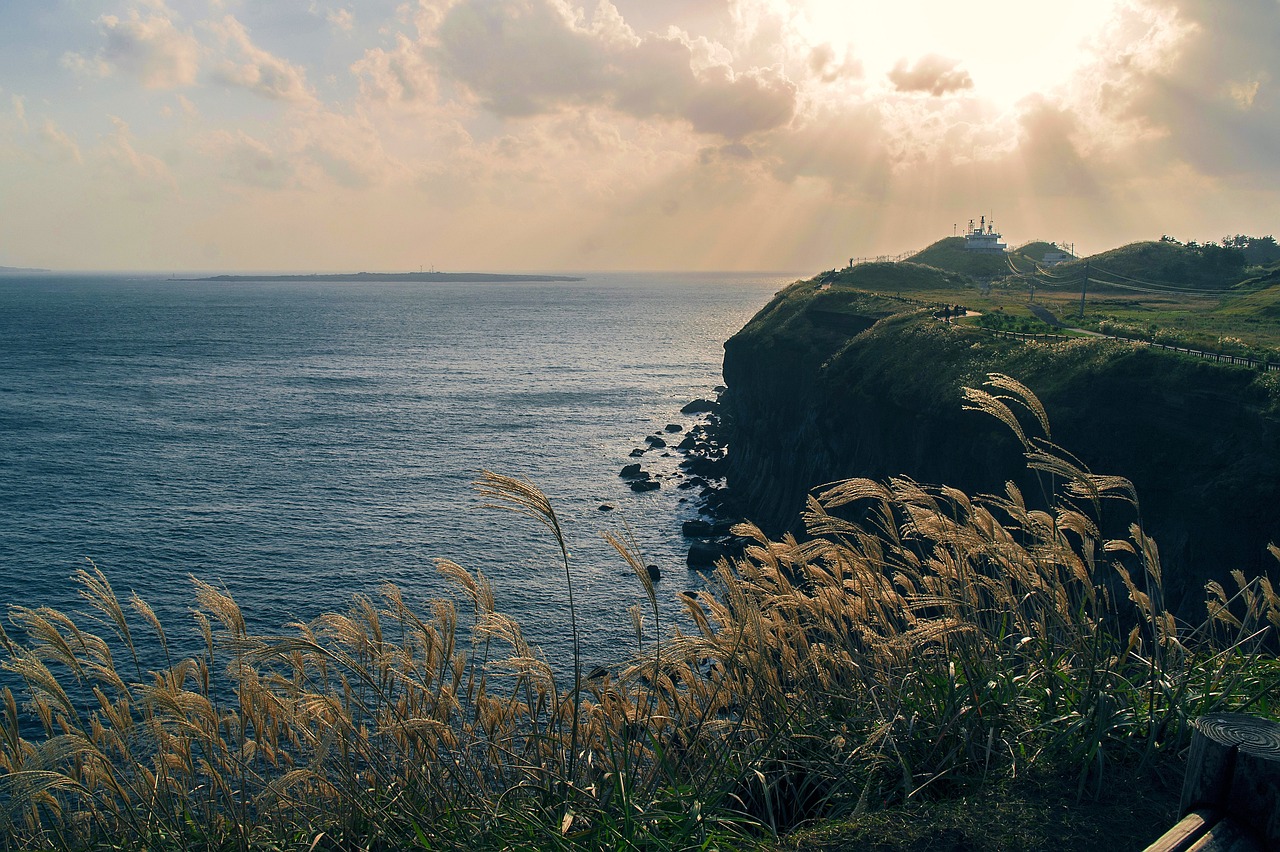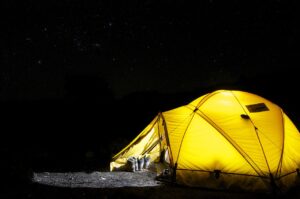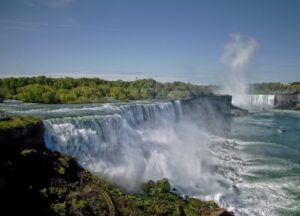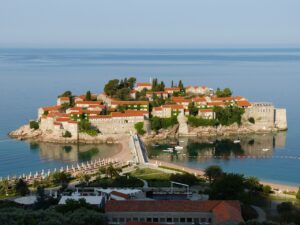Nestled like a sparkling jewel in the southern waters of South Korea, Jeju Island is a paradise of natural wonders and cultural treasures. With its stunning landscapes, rich heritage, and unique local charm, this island offers an unforgettable travel experience that leaves visitors captivated and rejuvenated.
A Natural Wonderland
As you step foot on Jeju Island, you’re immediately greeted by a tapestry of natural beauty that spans from pristine beaches to lush forests and volcanic landscapes. The crown jewel of this island’s natural wonders is the dramatic sight of Seongsan Ilchulbong, also known as Sunrise Peak. A UNESCO World Heritage site, this awe-inspiring volcanic cone boasts a breathtaking hiking trail that rewards climbers with panoramic views of the island and the ocean at sunrise. The ascent itself is an adventure, taking you through lush greenery and unique geological formations that tell the story of the island’s volcanic history.
Venturing to the island’s coastline, you’ll discover the striking beauty of Manjanggul Cave, a subterranean world of intricate stalactites and stalagmites formed over millions of years. The cave is an eerie and ethereal sight, reminding visitors of the island’s volcanic origins and the fascinating geological processes that have shaped it. Walking through the dimly lit chambers, you’ll feel like you’re stepping into another world, surrounded by nature’s artwork.
For those seeking tranquility, Jeju’s beaches offer a haven of relaxation. Hyeopjae Beach, with its powdery white sands and turquoise waters, is a favorite spot to unwind and take in the gentle ocean breeze. The beach is also bordered by a dense forest, creating a serene atmosphere that’s perfect for picnics, beach games, or simply watching the waves roll in. Meanwhile, Jungmun Saekdal Beach captivates with its unique black sands, creating a stark contrast against the emerald waters. This beach is not only a place to soak up the sun but also to witness the raw power of nature as the waves crash against the shore.

Cultural Gems
Beyond its natural wonders, Jeju Island also boasts a rich cultural heritage that is deeply rooted in its history and traditions. The Jeju Folk Village immerses visitors in the island’s past, showcasing traditional thatched-roof houses, time-honored handicrafts, and interactive cultural performances. Walking through the village feels like stepping back in time, offering a glimpse into the daily lives of the island’s inhabitants from bygone eras.
The Haenyeo, or “sea women,” are an emblem of Jeju’s culture and resilience. These skilled divers have been harvesting the ocean’s bounty for generations, and witnessing their breathtaking underwater feats is a testament to the island’s unique way of life. With a deep connection to the sea, the Haenyeo symbolize the island’s determination and adaptability, as they dive fearlessly into the cold waters to gather seafood using traditional methods.
Culinary Delights
Jeju’s cuisine is a reflection of its natural bounty. The island’s temperate climate and fertile land yield an array of fresh produce that finds its way onto plates in the form of mouthwatering dishes. One must-try delicacy is the Jeju Black Pork, tender and succulent meat raised on the island and prepared in various styles, from BBQ to stews. The pork’s distinctive flavor comes from the pigs’ diet of chestnuts and the clean air they breathe on the island.
Exploring the local markets is an adventure in itself. Dongmun Market, the largest traditional market on the island, is a sensory delight with stalls offering a colorful array of fruits, vegetables, seafood, and handicrafts. It’s the perfect place to sample Jeju’s famed citrus fruits, such as hallabong oranges, which are not only delicious but also a testament to the island’s fertile soil and mild climate.
Exploration and Adventure
Adventurers will find no shortage of activities on Jeju Island. Horseback riding through the scenic landscapes provides a unique perspective, allowing you to connect with nature and the island’s rural charm. Guided tours offer the opportunity to explore Jeju’s hidden gems, from secluded waterfalls to off-the-beaten-path viewpoints that showcase the island’s diverse beauty.
For those who enjoy a bit of thrill, exploring lava tube caves is a must. These natural formations are a result of volcanic activity and create captivating underground passages. The Manjanggul Cave, mentioned earlier, is one such cave that takes visitors on a mesmerizing journey through its chambers. As you walk along the paved paths, you’ll be surrounded by the stunning formations that were sculpted by the flow of lava.
Embracing the island’s coastal allure, embarking on coastal walks is a serene way to experience Jeju’s landscapes. The Olle Trails, a network of walking paths that circle the island, offer a range of routes suitable for different preferences and fitness levels. These paths lead you through charming villages, past coastal cliffs, and provide opportunities to interact with the locals, creating a truly immersive experience.
Chasing Sunsets and Sunrises
Jeju Island’s geographical position lends itself to some of the most awe-inspiring sunsets and sunrises. From atop Seongsan Ilchulbong or while strolling along the coastline, witnessing the sun’s warm embrace as it kisses the horizon is an experience that etches itself into memory. The island’s tranquil settings and unobstructed views provide the perfect canvas for nature’s vibrant displays of color. Whether you’re an early riser or a night owl, capturing these fleeting moments on camera is a must.
The best time to visit Jeju Island is during the mild months of spring (April to June) and fall (September to November), when the weather is pleasant and the landscapes are adorned with vibrant colors. The island’s peak summer months can get hot and humid, making outdoor activities a bit more challenging, but the coastal breezes offer some relief.
With a well-developed tourism infrastructure, getting to and around Jeju Island is hassle-free. The island is served by regular flights from major South Korean cities and neighboring countries. Once on the island, public transportation, rental cars, and taxis make it easy to navigate between attractions.
From its natural wonders to its cultural riches, Jeju Island ofbeckons travelers with an irresistible blend of adventure and tranquility. Whether you’re captivated by its lush landscapes, enamored by its cultural heritage, or simply seeking a respite from the urban grind, this enchanting island promises a journey of discovery and wonder. Every corner of Jeju tells a story, and every experience leaves an indelible mark, making it a destination that will remain in your heart long after you’ve left its shores.
Frequently Asked Questions (FAQs)
1. When is the best time to visit Jeju Island?
The best time to visit Jeju Island is during the spring (March to May) and fall (September to November) seasons when the weather is mild, and the island is adorned with blooming flowers or vibrant autumn foliage.
2. How do I get to Jeju Island?
You can reach Jeju Island by air or sea. Jeju International Airport serves as the main gateway for domestic and international flights, while ferries operate from various ports on the Korean mainland.
3. What are the must-visit attractions on Jeju Island?
Some must-visit places include Hallasan National Park, Manjanggul Cave, Seongsan Ilchulbong Peak, Jeju Loveland, and the O’Sulloc Tea Museum. Don’t miss exploring the unique lava tube caves and waterfalls.
4. What is the Jeju Olle Trail?
The Jeju Olle Trail is a network of walking paths that crisscross the island, offering scenic routes through villages, fields, and along the coast. It’s a fantastic way to experience the natural beauty and culture of Jeju at a leisurely pace.
5. What local food should I try in Jeju?
Jeju is famous for its unique cuisine. Be sure to try black pork barbecue (heuk dwaeji), abalone porridge (jeonbokjuk), Jeju citrus fruits (hallabong), and the iconic seafood dish, haemul pajeon (seafood pancake).
6. Are there any cultural events or festivals in Jeju?
Yes, Jeju hosts various cultural events and festivals throughout the year. The Jeju Fire Festival in March, the Jeju Stone Park Walking Festival in April, and the Jeju Loveland Valentine’s Day Event in February are just a few examples.
7. How is the public transportation on the island?
Jeju has a well-developed public transportation system, including buses and taxis. Renting a car or scooters is also a popular option for more flexibility in exploring the island.
8. Can I climb Hallasan Mountain?
Yes, Hallasan Mountain is a popular hiking destination. There are several trails of varying difficulty. Make sure to check the weather conditions before attempting the hike.
9. Is it necessary to speak Korean to get around Jeju Island?
While knowing some basic Korean can be helpful, many locals in tourist areas speak English, and signs are often in English. Learning a few common Korean phrases can enhance your experience.
10. What souvenirs can I buy in Jeju?
Jeju offers a variety of unique souvenirs such as hallabong-flavored products, Jeju black tea, handmade chocolates, and traditional crafts like dol hareubang (stone grandpa) replicas.





